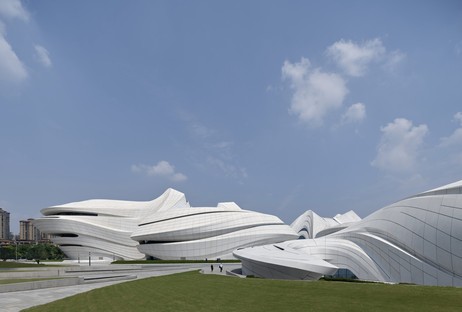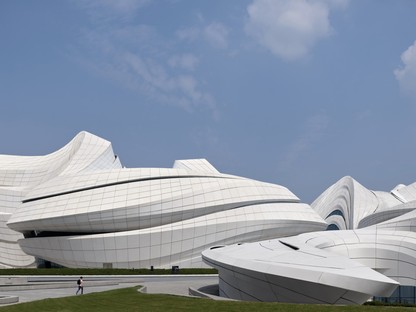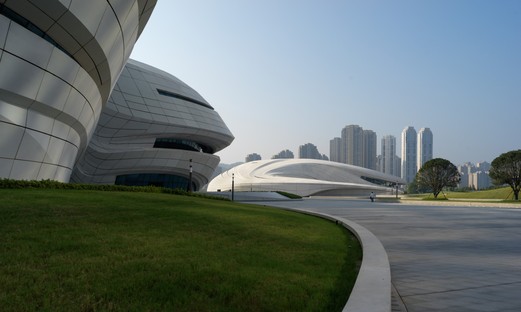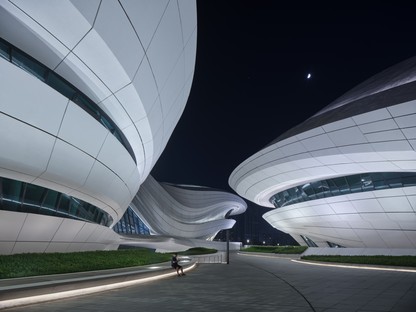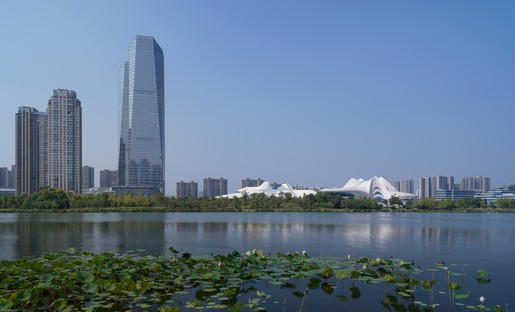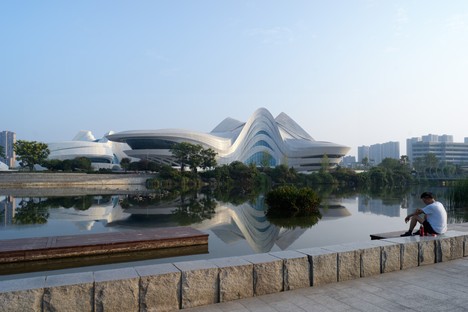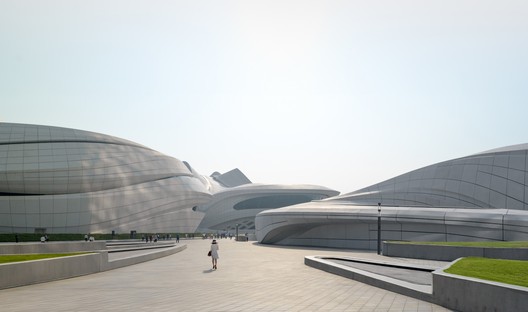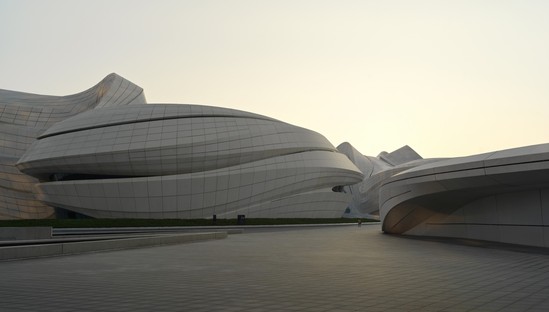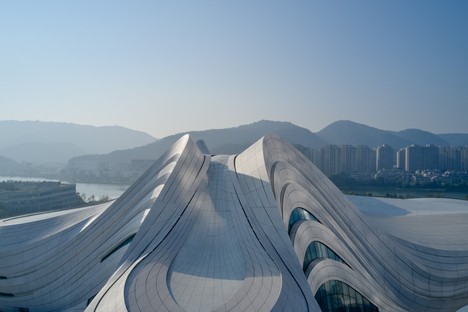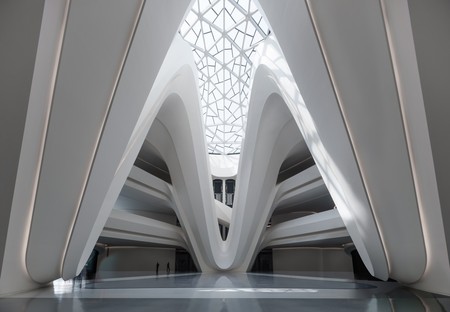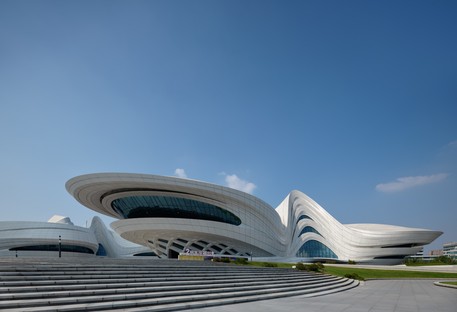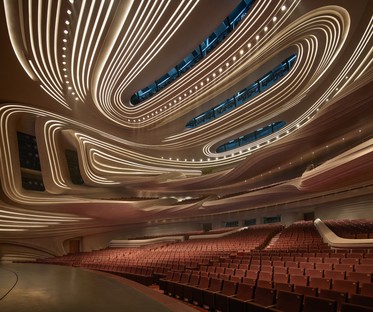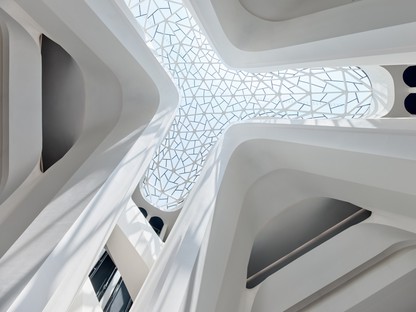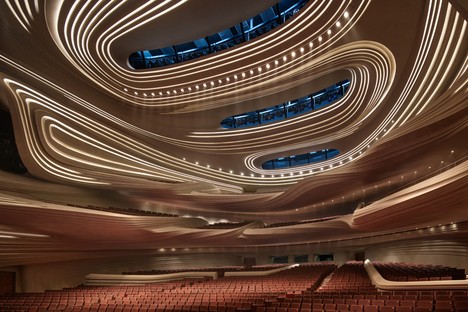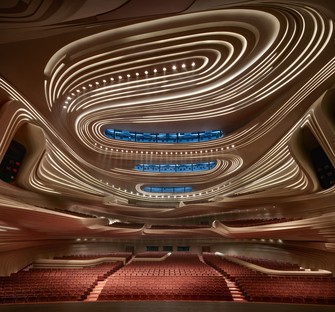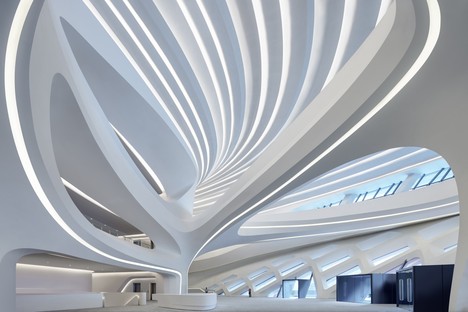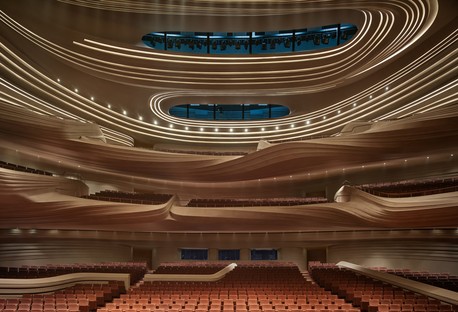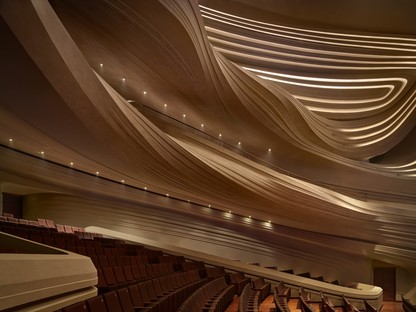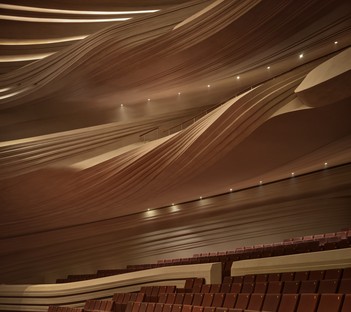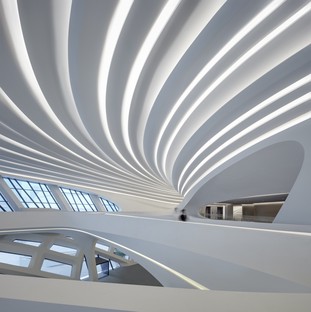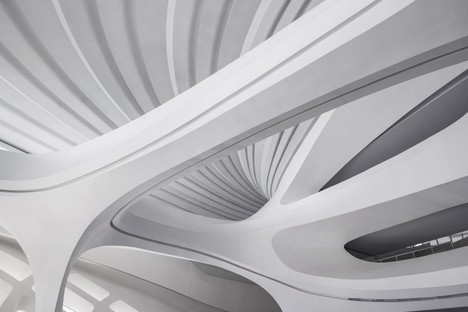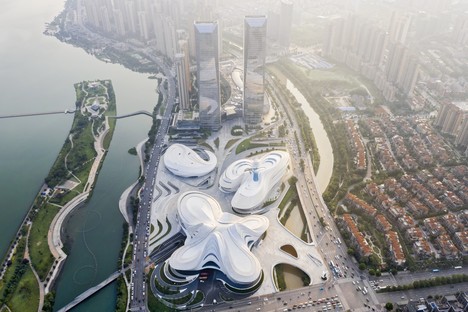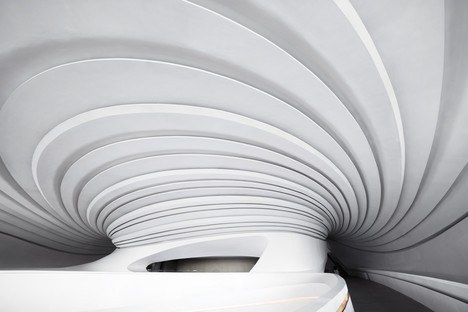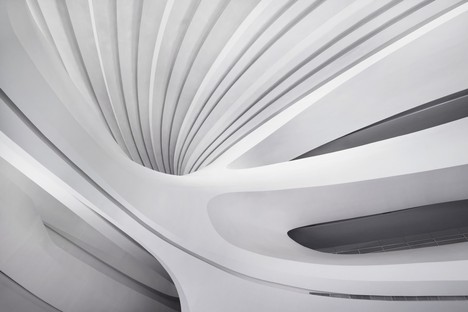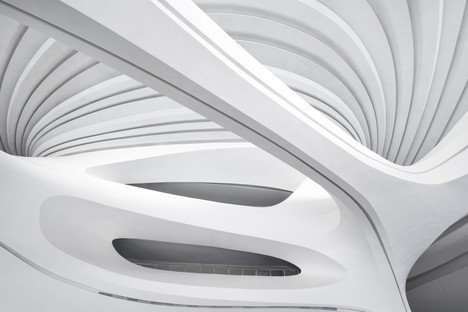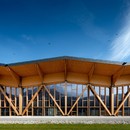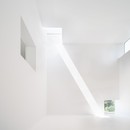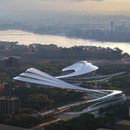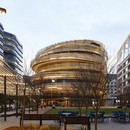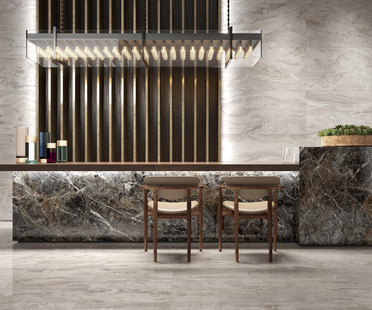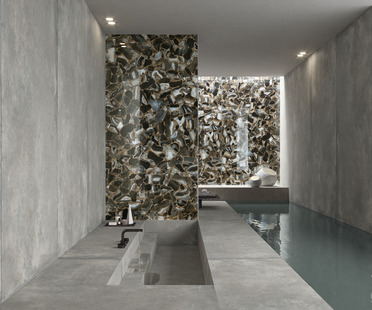31-12-2019
Zaha Hadid Architects Meixihu International Culture & Arts Centre Changsha
Seven7Panda, Virgile Simon Bertrand,
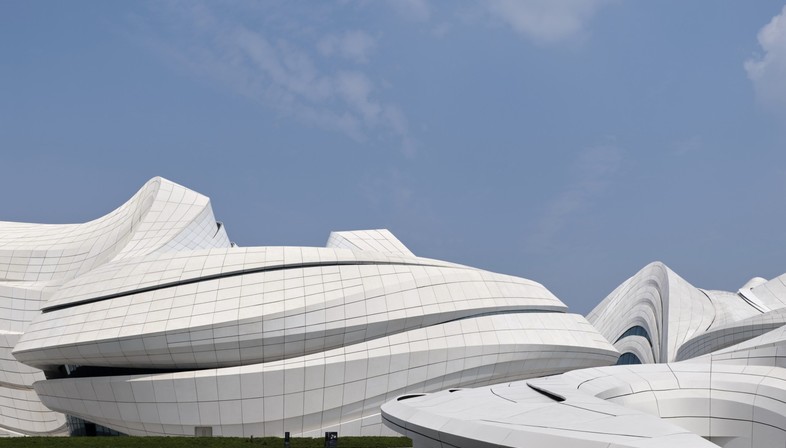
The city of Changsha, capital of Hunan province and an important stop on China’s historic trade routes, recently opened a new cultural centre designed by Zaha Hadid Architects. Meixihu International Culture & Arts Centre is a new cultural complex that continues to add to the city’s importance as a centre of trade that has now become one of the principal communications centres of the country.
The cultural programmes at the new centre in Changsha begin with an immersive exhibition entitled Flowing Eternity by the MOTSE collective, a group of 40 artists and scientists based in Shenzhen whose collaborative, interactive works use innovative technologies in new media to explore contemporary culture.
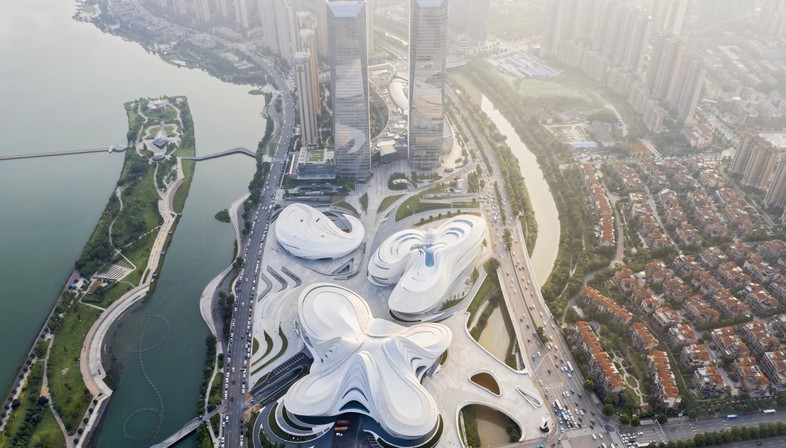
The Meixihu International Culture & Arts Centre in Changsha is the biggest and most complete cultural centre in China’s Hunan province, comprising 115 thousand square metres divided into three cultural institutions. These are MICA, the Museum of Contemporary Art, composed of eight galleries arranged around a central atrium for large-scale installations and events; a Grand Theatre with 1800 seats, appropriate for a wide variety of performing arts events and used to host a popular programme of performances and television productions; and, lastly, a Small Theatre, a multipurpose hall with a capacity of 500 seats which is extremely versatile and can be transformed to different configurations to accommodate performances ranging from small plays to fashion shows, music performances and commercial events. Each institution is completed by supporting facilities, service areas, catering facilities and administrative offices. The centre is well-situated in relation to the urban transportation links, connected directly with a station on line 2 of the Changsha metro system. The cultural centre looks like a flowing, organic construction even though each institution has its own separate building. The architects arranged the layout of the buildings to create outdoor courtyards between them, where pedestrian routes intersect and form spaces for outdoor events and sculpture exhibitions, and also connect with nearby roads, offering views over Lake Meixi and direct access to footpaths in the parks.
Zaha Hadid Architects’ building has quickly become an important landmark in the city with its fluid shape and external cladding underlining its volumes and evoking the reflection of light on the waters of the nearby lake. The cultural programme, diversified and yet complementary for the three institutions, contributes to the revitalisation of the site and makes Meixihu International Culture & Arts Centre a landmark in the neighbourhood both by day and at night.
(Agnese Bifulco)
Images courtesy of Zaha Hadid Architects
Photograph © Virgile Simon Bertrand (01-20)
Photograph by IG: Seven7Panda (21-25)
Architect: Zaha Hadid Architects (ZHA)
Design: Zaha Hadid, Patrik Schumacher
ZHA Project Director: Woody Yao, Simon Yu
ZHA Project Leader: Simon Yu
ZHA Project Team: Zhenjiang Guo, Charles Kwan, Jinqi Huang, Neil Sansom, Pravin Ghosh, Thomas Jensen, Justin Kelly, Wandy Mulia, Uli Schifferdecker, Adrian Aguirre Herrera, Aurora Santana, Koren Sin, Johanna Huang, Yifan Zhang, Collin Spelts, Fei Liang, Adam Fingrut, Yitzhak Samun
ZHA Schematic Design: Zhenjiang Guo, Charles Kwan, Jinqi Huang
ZHA Museum Design: Tariq Khayyat, Kutbuddin Nadiadi, Diego Rossel, Gerry Cruz, Matteo Melioli, Xiaosheng Li, Yuxi Fu, Thomas Jensen, Matthew Johnson, Justin Kelly, Drew Merkle
ZHA Competition Team
ZHA Project Architect: Tiago Correia
ZHA Project Team: Victor Orive, Fabiano Continanza. Zhenjiang Guo, Danilo Arsic, Ines Fontoura, Rafael González, Alejandro Díaz, Jimena Araiza
ZHA Concept Development: Hannes Schafelner, Philipp Ostermaier, Jakub Klaska, Maren Klasing, Saman Saffarian, Martin Krcha, Maria Tsironi, Spyridon Kaprinis
Competition Consultants
Structural, Facade & Building Services Engineering: BuroHappold Engineering
Theatre Consultants: Theatre Projects Consultants
Acoustics Consultants: Marshall Day Acoustics
Consultants
Local Design Institute: Guangzhou Pearl River Foreign Investment Architectural Designing Institute (Guangzhou, China)
Structural Engineers & Building Services: Guangzhou Pearl River Foreign Investment Architectural Designing Institute (Guangzhou, China)
Specialist Acoustics Consultants to the Architect: Marshall Day Acoustics (Hong Kong & Melbourne)
Project Acoustical Consultants: Zhang Kuisheng Acoustical Design Research Studio (Shanghai, China)
Theatre Management Consultants: Poly Theatre Engineering Consultancy (Beijing) Co. Ltd.
Theatre Equipment Consultants: Kunkel Theatre Engineering & Consulting (Beijing) Co., Ltd.
Museum Management Consultants: Global Cultural Asset Management (New York)
Transport Consultants: Sinclair Knight Merz (Shanghai, China)
Project Management: Shanghai Gao Shen Consultants Ltd. (Shanghai, China)










